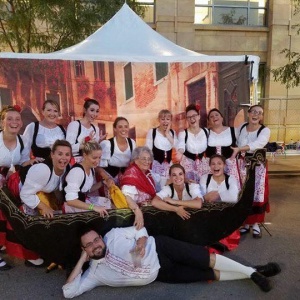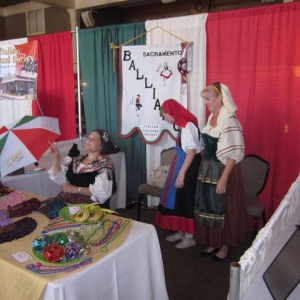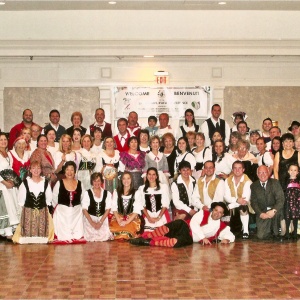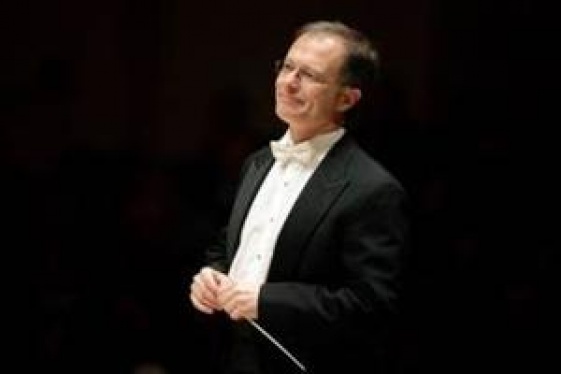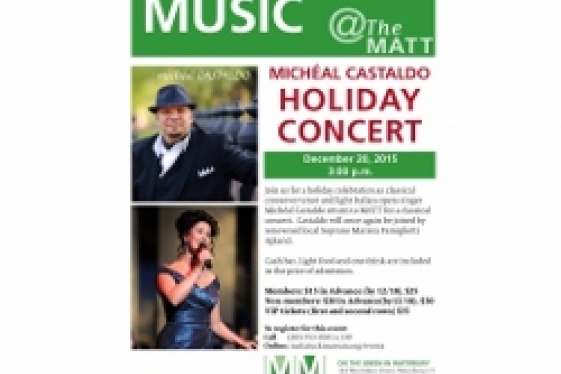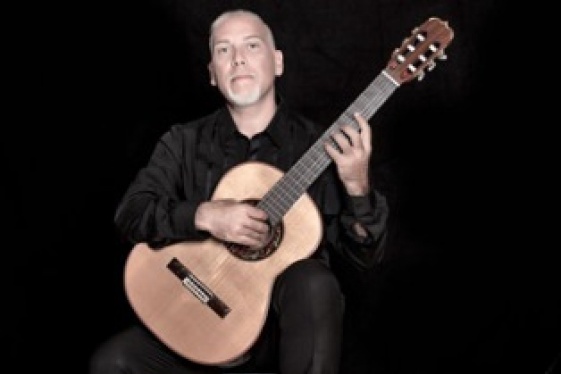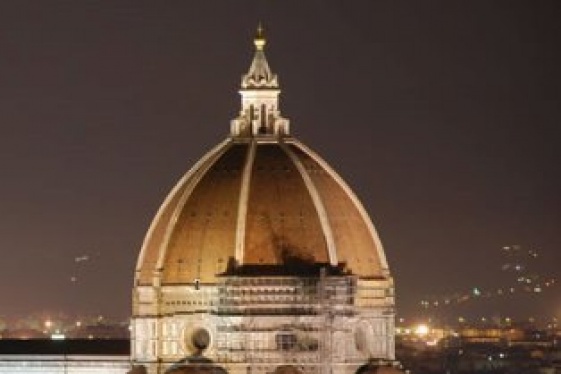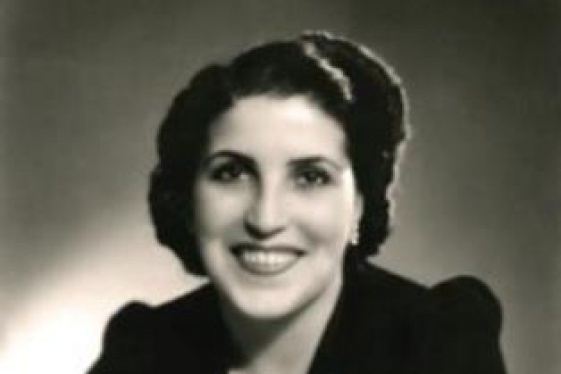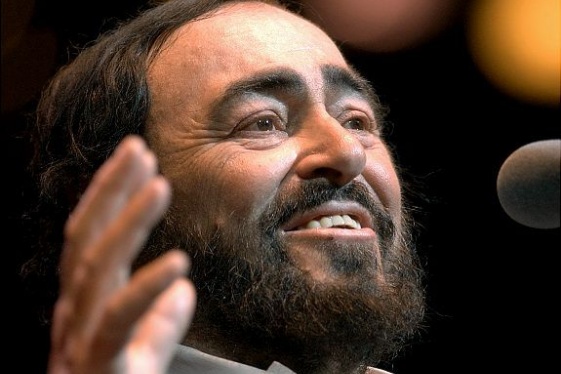
Leslie Gigliotti (President of the Italian Folk Art Federation of America)
Italian Folk Art Federation of America: celebrando l'Italia e le sue tradizioni con gioia e allegria

In the Italian American community, where traditions are a fundamental part of the rich cultural heritage that those who are part of it proudly claim, folklore has a particular importance, which is sometimes difficult to understand here from Italy, where we unfortunately often neglect the importance of our traditions.
The Italian Folk Art Federation of America was founded to bring together and give voice to this aspect, and it is with particular satisfaction that We the Italians welcome Leslie Gigliotti, President and CEO of this important institution.
Leslie, you are the President of the Italian Folk Art Federation of America. Please tell us about this association and its mission, when it was born and how it is structured
The Italian Folk Art Federation of America was founded in 1979 as an outgrowth of an Italian Folk Art Project initiated in 1977 at the Nationalities Service Center (NSC) of Philadelphia. With the assistance of the NSC and the leadership and guidance of Cav. Elba Farabegoli Gurzau, IFAFA was created. We are super excited to be celebrating our 40th anniversary next year!
Our organization was created to preserve and foster interest in all Italian folk arts; to research Italian folklore, traditions, costumes, dances, songs, instruments, etc.; to act as a center for gathering, storing and disseminating the information; and to bring together Italian folk performing groups and other interested individuals. We are a member of the Federazione Italiana di Tradizioni Popolari (Italian Federation of Popular Traditions) in Rome, Italy.
IFAFA is a registered non-profit and structured not as chapters, but as individual memberships. We govern with an executive team and board of directors. All of us are volunteers which is incredible! Many of us have full time jobs and families but we love IFAFA and believe in its mission. At present our membership is all based in the United States but we know that the rest of North America is opportunity for us to engage with people who share our same passions.Our membership is not limited to Italians and Italian Americans. We are all Italophiles and/or lovers of the folk arts. Everyone is welcome!
When I first joined the organization in 2004, I was amazed by the diversity of the membership. I met people at my very first conference in Philadelphia who joined IFAFA because of their Italian heritage, people who belonged to international folk dancing groups and wanted to learn Italian folk dancing, people who wanted to teach others about handicrafts like palm weaving and people whose neighbors were members and raved about how fun the group was and thought they’d check us out (and then became members too!).
Are there Italian regions that are more present than others in the traditions you promote?
All regions of Italy are included in our organization. Folk Art is everywhere! One of the great things of our organization is the research our members have done on a specific dance or song and how that it can vary from region to region, or even within a region. We have members that make lace and mosaics, for example, which are arts found all over Italy.
One of my favorite conference sessions was a class taught by a fellow member on a folk song where there exist 3 distinct versions, mainly within the same region. But through dialect and distance, the words and theme changed just ever so slightly to alter the storytelling. It was fascinating dissecting the changes in language and meaning.
For people watching our dance groups, they are often amazed to see that folk dancing isn’t just the tarantella. Our members research and teach Italian waltzes, mazurkas, and regional tarantellas.
Why the Folk Art was and still is so important to stick with the Italian heritage?
Folk art is global! We just happen to focus on Italian folk art, but folk art is everywhere. Specific to Italians, it both provides a connection to history for descendants of Italians and for Italians, living in Italy, a method to preserve history and introduce the folk arts to contemporary audiences.
Many of our members travel to Italy regularly and connect with Italians who also are involved in the Folk Arts. If you check out our Facebook page, you’ll regularly see posts. Those connections show that the folk arts continue to flourish in Italy. We show that people actually live the culture rather than simply reading about it or observing it from a distance. As someone who was raised in the United States but of Italian heritage, this is hugely important to me as this organization gives me that link that I, and I suspect many others, crave.
Some could think that the Folk Art is mainly something regarding old people, but I understand that you also have a lot of kids dancing and celebrating their Italian heritage, am I right?
Our membership ranges from school age children to senior citizens. We have members that have been with the organization since its founding and members that just joined last year. Our membership has many children dancing in groups. They came to this not just from their parents and grandparents, but also their friends. Kids like fun, and we are fun! But on a deeper level, folk art is utilitarian and universal. A fundamental characteristic of folk art is its accessibility. It’s not constrained by borders, nor age.
Are you spread all over the United States? Which areas are the most active in the activities you promote?
Our membership is based all over the United States. We’re not concentrated in just one region. Our members live on the East Coast, the West Coast, the Mid-West and the South. Many members are part of dance or singing groups, and/or also have memberships in other Italian focused organizations. IFAFA is about sharing knowledge and forging new relationships so we happily liaise with other organizations across the United States. We’d love to expand our membership beyond the United States as Italians have a presence all over the world and the folk art community is global.
On your website you also show a beautiful collection of costumes, from every one of the Italian regions. Costumes are important, right?
The 200 costume color plates on our website and those whose descriptions that often appear in our newsletter Tradizioni are from the book, “Il costume popolare in Italia”, written and illustrated by Emma Calderini. Our founder, Elba Farabegoli Gurzau, wrote a wonderful book on Italian regional dress called “Folk Dances, Customs and Costumes of Italy”. To this day, it’s still used as an English language resource for individuals looking to make an authentic costume. For me, one of the things I love to do in Italy is seek out the museums that have costumes to see with my own eyes how the fabric, design and adornment changes from locale to locale.
Your next National Conference will be held in Milwaukee, Wisconsin in September 2019. What happens during this big event?
In many ways, our conferences are like a family reunion! We hold them in a different member city and those members do nearly all the planning, booking and running of the conference. The executive team and Board are involved, but it’s really the energy and drive of the local members that make the magic for the conference. As I mentioned earlier, we’re all volunteers; so, it’s pretty impressive that we do all of this with no paid staff!
The conference is a homecoming, educational sessions and parties all rolled into one. We have our annual general meeting and welcome party Friday evening. And often earlier in the day, our hosts arrange for a tour of a site, museum or market that has a strong connection to Italy or to the folk arts.
Saturday is an action-packed day that has dance classes, lectures on history, art, cooking or literature, making handicrafts and many other topics that connect to the Italian folk arts. Each conference has fresh and exciting topics. Our members made lead sessions or teach classes, but our hosts will also reach out to their community and invite them to present. We’ve had university professors give lively lectures and local artists demonstrate their wares.
Our weekend culminates in a lively Festa Saturday evening with a dinner and entertainment by our member dance groups and singers. Many of our members schedule their vacations around the conference and get together with fellow members both before and after the conference. It’s a love filled and invigorating weekend.
Is there an anecdote you want to share with our readers to convince our readers to be part of the celebration of Italian folk art?
Folk arts aren’t just one thing; it encompasses many areas so there is bound to be one aspect that will bring you in and give you the urge to learn more. Meeting likeminded people just adds to that desire to engage even more.
Last year, at our conference in Rockford, Illinois, I met two individuals who had never attended a conference prior nor had much knowledge of IFAFA. They had learned about the conference at an Italian Festival in the area just the month prior and were so excited and fascinated by what IFAFA offers that they signed up for the conference and soon became members. I was so thrilled when I heard their story because that is what keeps this organization going after nearly 4 decades.
You may be interested
-
Cathedral of St. John the Divine, Oratorio S...
For the first time ever, The Cathedral of St. John the Divine, in collaboration with the O...
-
Frank Sinatra 100th Anniversary Celebration
Hoboken’s favorite son, Frank Sinatra, continues to evoke images of the good life nearly 1...
-
Holiday Concert with Micheal Castaldo and Ma...
The Mattatuck Museum (144 West Main St. Waterbury, CT 06702) is pleased to celebrate...
-
Italian Guitarist Roberto Fabbri to Perform...
For the final performance of his spring solo tour, Italian classical guitarist Roberto Fab...
-
Lecture and Concert that bring Italy to New...
Saturday, february 28 - 7 pm ESTChrist & Saint Stephen's Church - 120 W 69th St,...
-
Met Guild to Honor Licia Albanese & Carlo Be...
Summer saw the passing of two of opera's most iconic figures: Licia Albanese, at the age o...
-
Pavarotti. Il mondo di Big Luciano. Anteprim...
Il mondo di Luciano Pavarotti e la sua grande carriera di cantante lirico rivivranno il 23...
-
Sinatra was ‘a towering figure’ for Italian...
By Richard Hutton While he has carved out quite a nice career for himself as an a...










